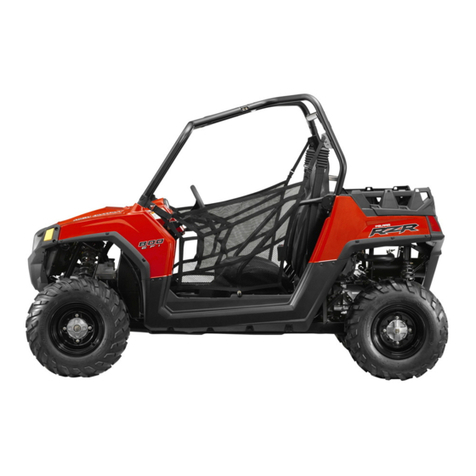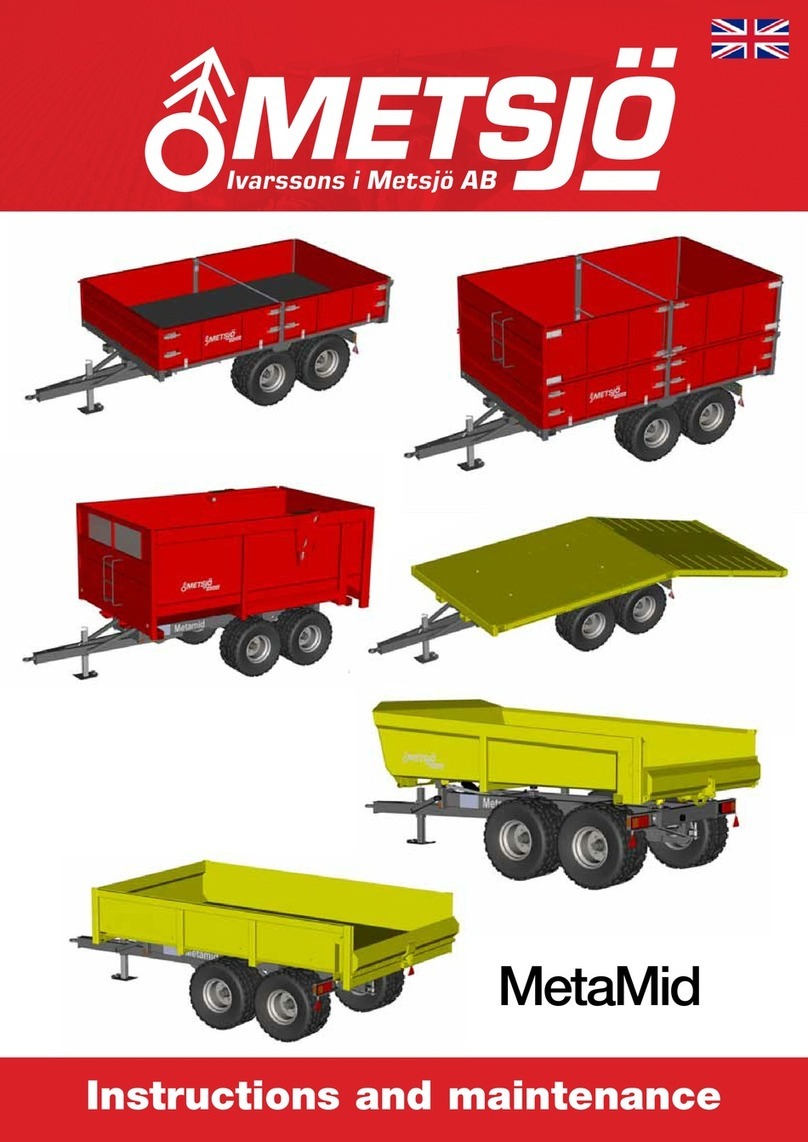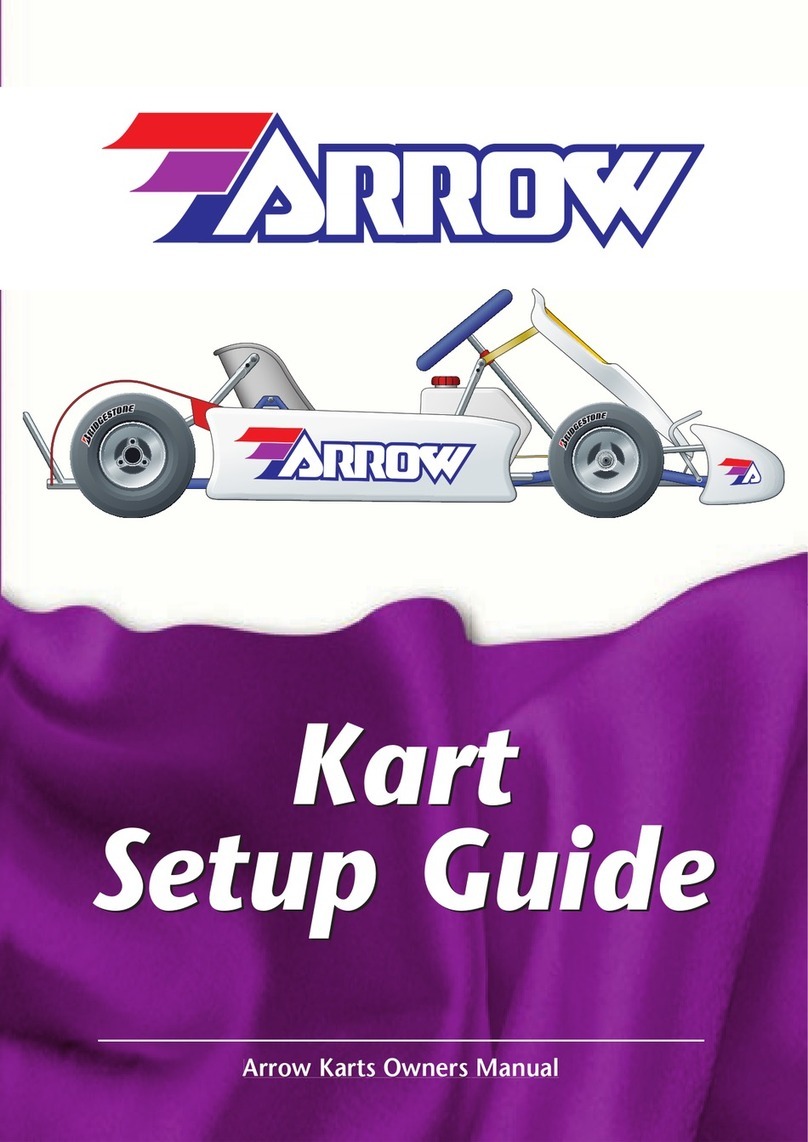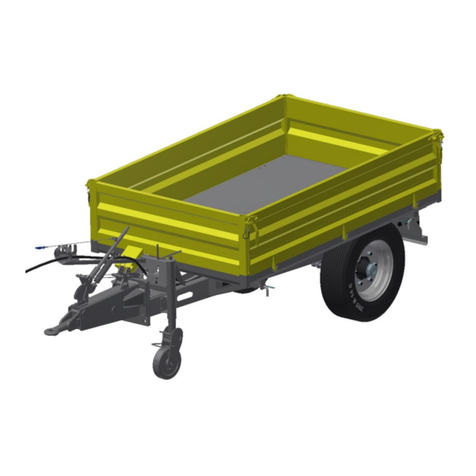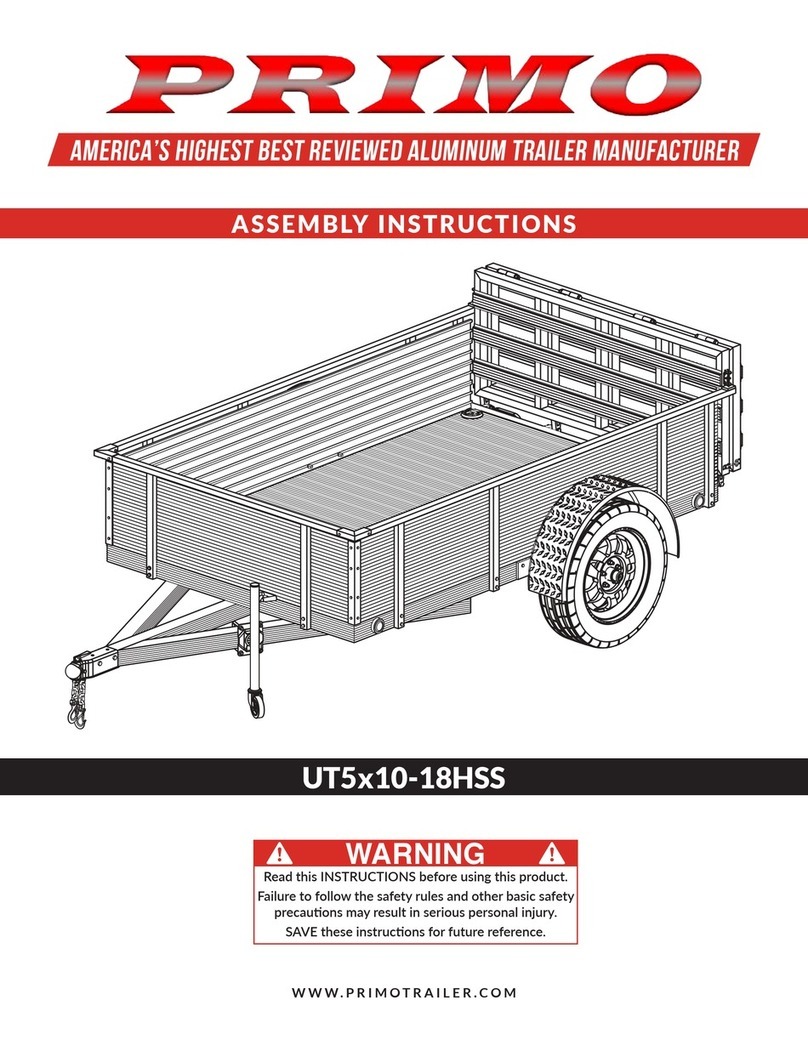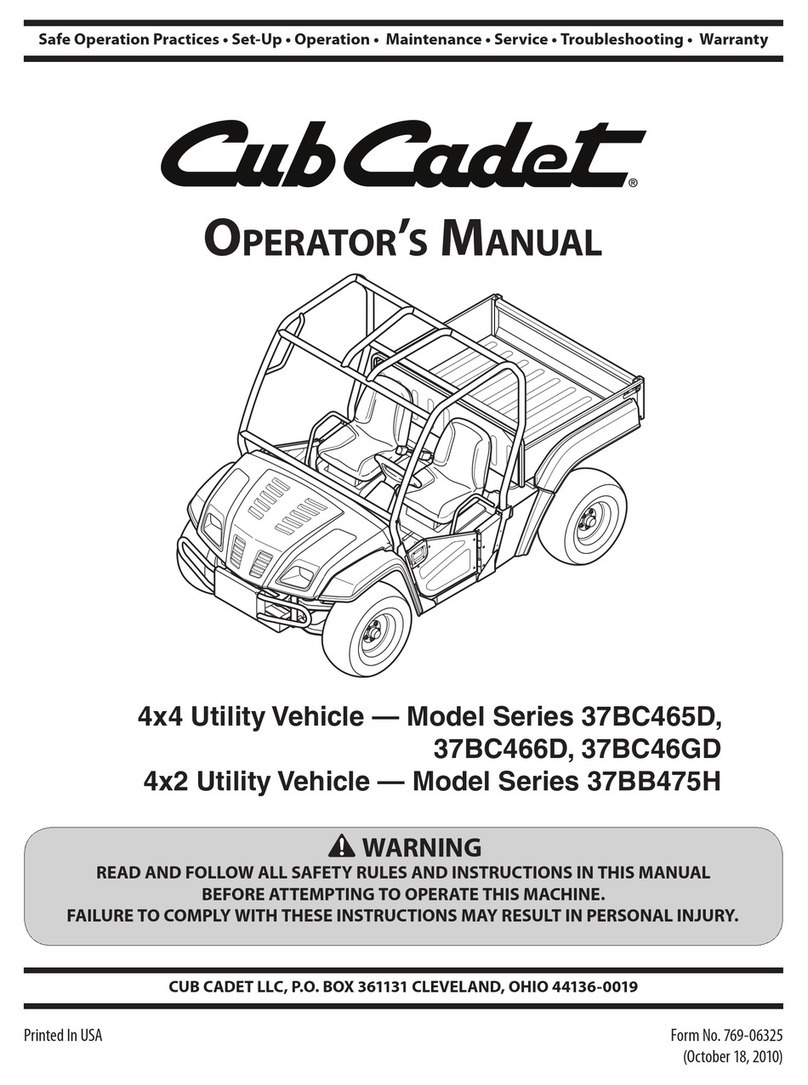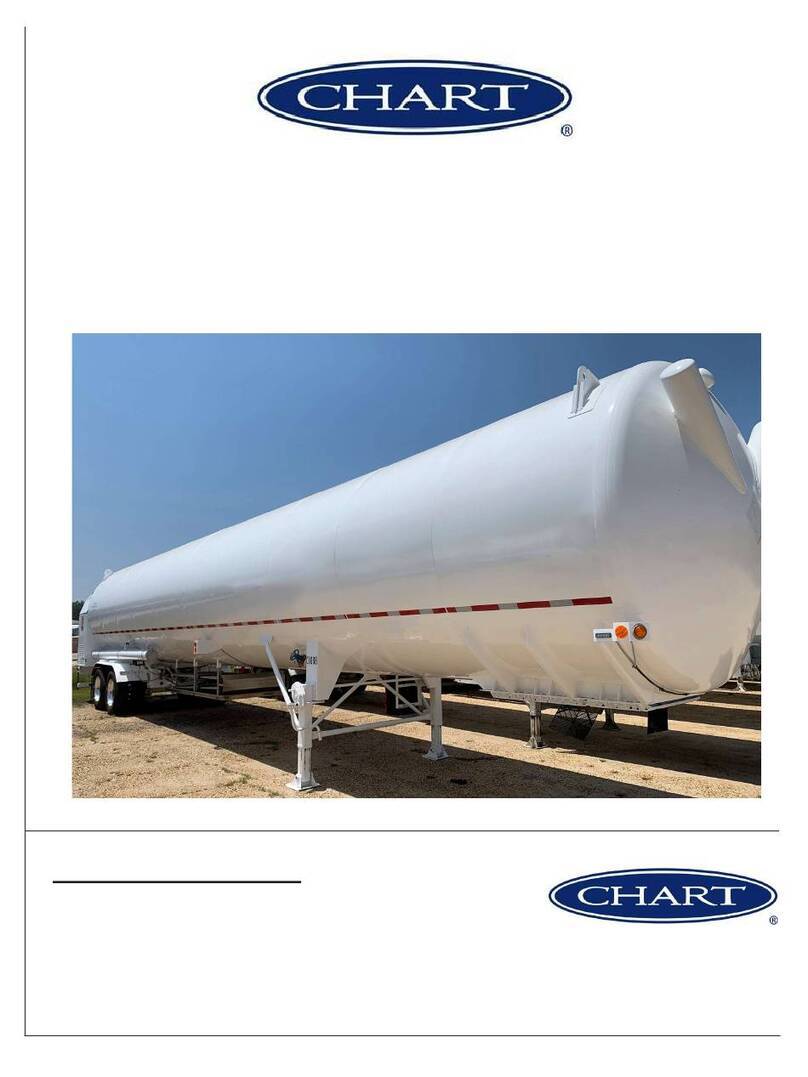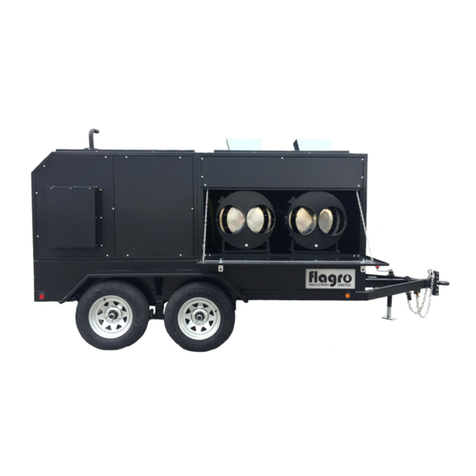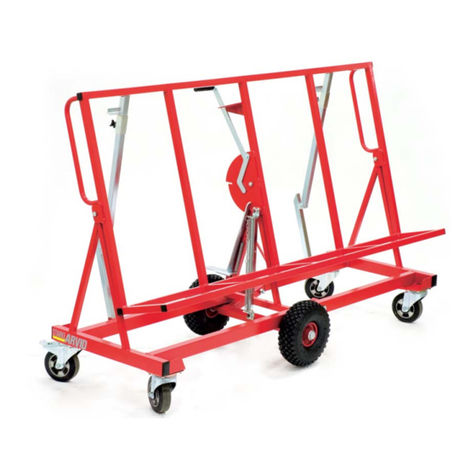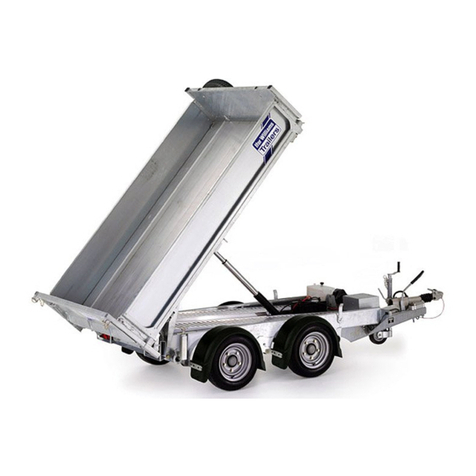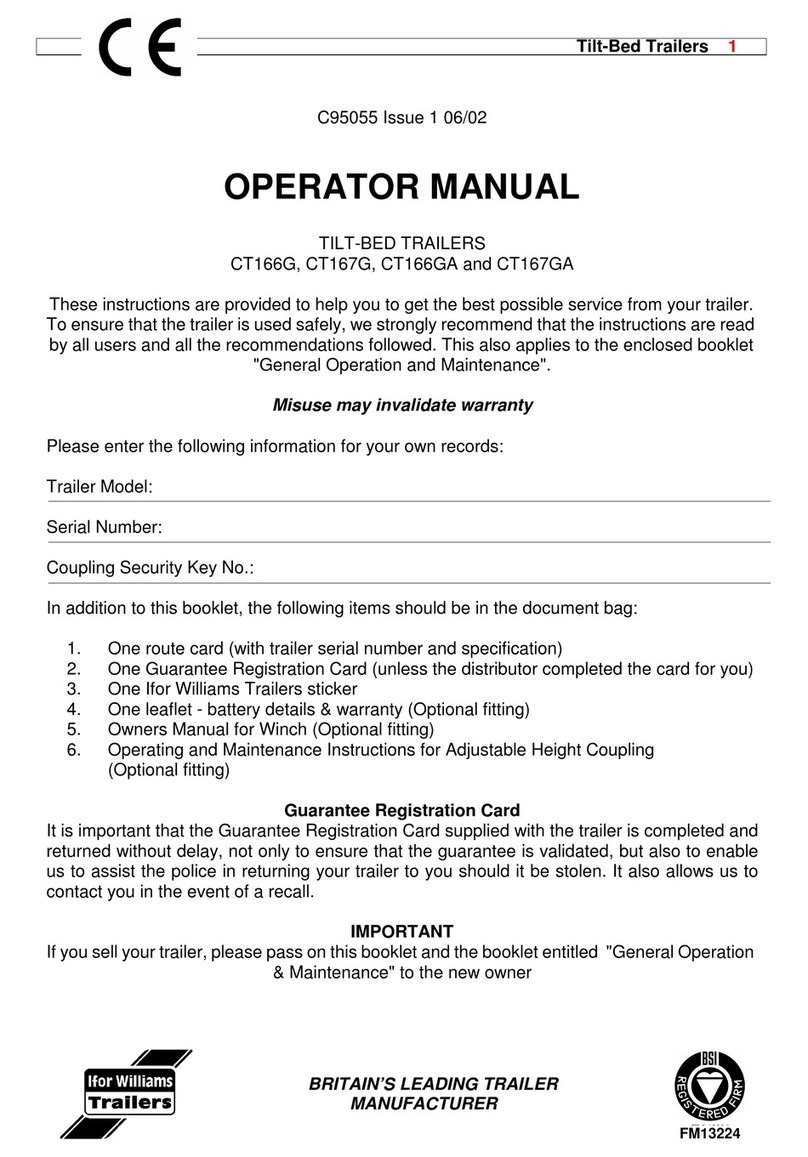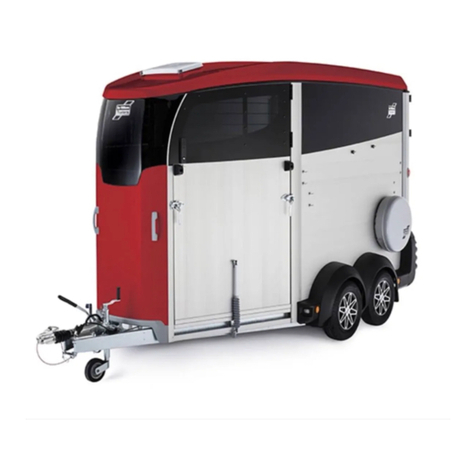
Tipping Trailers 5
Operator Manual
TILTING THE TRAILER BODY (continued)
Connect the remote control lead to the socket on the side of the
pump. * (fig 6) Insert the key into the isolator switch and turn
clockwise through 90 degrees to switch on.
After checking that the rear of the trailer is clear, operate the ‘up
arrow’ button on the remote control to tip the trailer body.
As the load starts to move, release the button and operate again in
short bursts to release the load slowly. It may be necessary to move
the trailer forward before the full load has been released to avoid the
load coming in contact with the rear of the trailer. Lower the body
slightly to hold the load back before moving the trailer forward.
To lower the body, operate the ‘down arrow’ button until the body is
in the required position. To return the trailer bed to the horizontal
position, ensure that the area between the body and chassis is clear
of obstructions and lower fully. To ensure that the body cannot be
accidentally raised, disconnect the remote control lead plug from the
socket (a straight pull).
During normal operation the ‘Green’ LED lamp on the remote control
will be lit. If the ‘Red’ LED lamp lights it will indicate that the battery
charge is low - i.e. below 9V. See also page 8 - battery indicators.
Turn the isolator key anti-clockwise through 90 degrees to switch off,
and remove the key.
Manual Operation (back-up system to the electrical pump)
Operation
Check that the rear of the trailer is clear.
Check that the manual release valve is closed and insert the handle
into the socket. After checking that the rear of the trailer is clear,
operate the manual pump lever to tip the trailer body.
To lower the body, check that the area between the body and chassis
is clear of obstructions and open the valve slowly. Control the rate of
descent by opening and closing the valve as required.
* Users should note that the remote control unit supplied is generally
splash-proof, although it is not fully waterproof. It should never be
submerged and should be removed from the trailer when not in use
to avoid damage and possible erratic operation.
If a control unit has been accidentally submerged or is otherwise
damaged it should be taken out of service until it can be fully checked
or ideally replaced with a new unit.
Fig.8
Fig.6
Fig.7
Fig.9
Fig.5
Slide pump handle into receiver
Behind front pump plate
Red & Green
LED Lamps
Up
Down
Manual operating handle
Manual release valve
Pump handle socket
Oil reservoir waterproof
filler cap Pump
Electrical remote
control connector
Isolator switch
and key




















